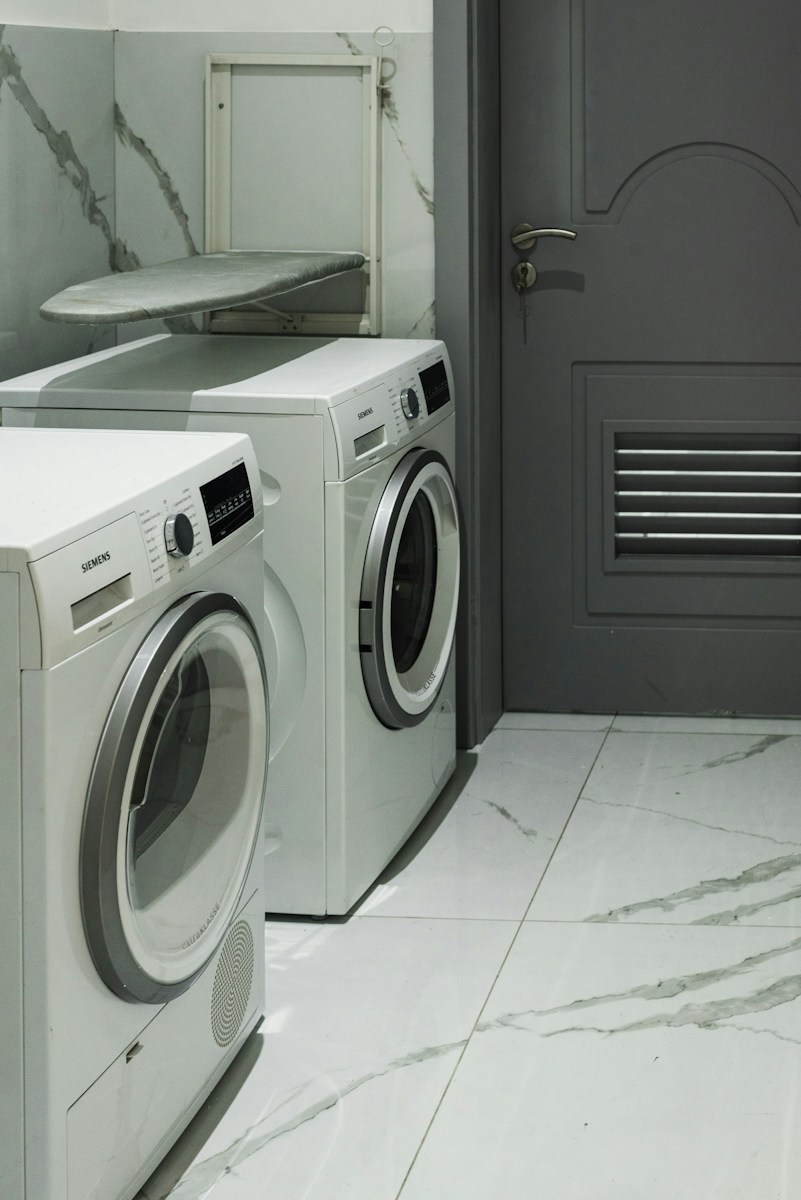How to design an efficient laundry room layout?

Whether you’re constructing a new home or renovating your current one, the laundry room often tends to be an afterthought. However, it’s an important space with a fundamental role in maintaining cleanliness and organization. Designing an efficient laundry room layout can significantly enhance the functionality of your home by providing an organized space for your washing chores.
In this article, we’ll delve deep into various aspects of designing a laundry room layout. We’ll discuss the importance of space, the integration of appliances, the role of storage, and the influence of design on functionality. Let’s get started.
Avez-vous vu cela : Building a home gym: creating a personal fitness sanctuary
The Importance of Space
For an efficient laundry room layout, space consideration plays a pivotal role. The size and shape of your room can significantly impact how you arrange your washer, dryer, and other laundry essentials.
In a small laundry room, every inch counts. You need to maximize the available area by carefully considering the placement of your washer and dryer. For small rooms, stacking these appliances can be a space-saving solution. Also, consider utilizing the wall space by installing shelves or hanging racks.
A découvrir également : How to design a home gym that fits your fitness goals?
If you are fortunate to have a larger laundry room, consider creating dedicated zones for different tasks such as sorting, washing, drying, folding, and ironing. This segmentation will streamline your laundry process, making it less of a chore.
Remember, a well-planned laundry room isn’t just about saving space; it’s about making efficient use of the area you have.
The Integration of Appliances
Laundry appliances, primarily your washer and dryer, are integral to your laundry room. Their size, type, and position can significantly influence your room’s layout.
Front-loading washers and dryers are typically more versatile in terms of placement. They can be stacked to save floor space or placed side by side under a countertop for a more integrated look.
Top-loading models, on the other hand, require more vertical space and cannot be placed under a countertop. Therefore, they are best for laundry rooms with ample space.
Consider the proximity to water and electrical outlets when placing your appliances. It’s more convenient to have these outlets near your washer and dryer. Also, consider the noise factor. If your laundry room shares a wall with a bedroom or living room, you might want to position your machines as far away from these rooms as possible to minimize noise disturbance.
The Role of Storage
Storage is another critical aspect of designing an efficient laundry room layout. A well-thought-out storage plan can keep your laundry room organized and make your tasks more manageable.
For small laundry rooms, consider installing wall-mounted cabinets or shelves to store your laundry detergents, fabric softeners, and other supplies. You can also use the space above your washer and dryer for additional storage.
In larger laundry rooms, you can consider a built-in closet or even a walk-in closet for storing your laundry essentials as well as items like ironing boards and drying racks.
Consider also having a dedicated space for dirty laundry. A built-in hamper or a pull-out drawer can keep your dirty clothes out of sight until it’s time to do the laundry.
Lighting and Design for Functionality
Just because it’s a laundry room doesn’t mean it has to be drab. The design of your laundry room, including the choice of colors, lighting, and finishes, can add to its functionality and overall appeal.
Choose light, bright colors for your laundry room. Light colors reflect natural and artificial light, making the room appear larger and more inviting.
Good lighting is crucial in a laundry room. You need to see stains on clothes, read labels, and find that elusive sock that always seems to disappear. Consider a combination of task lighting for specific work areas, ambient lighting for general illumination, and accent lighting for decorative purposes.
Lastly, consider the floor material. Laundry rooms can get wet, so you want a floor that is water-resistant and easy to clean. Tiles, vinyl, and concrete are all good choices.
In conclusion, an efficient laundry room layout is a combination of thoughtful space planning, strategic appliance placement, ample storage, and good design. It should not only make your laundry tasks easier but also contribute to a smoother workflow and a more organized home.
Laundry Closet vs Laundry Room: Choosing What’s Best For You
When it comes to designing your laundry space, the decision between a laundry closet and a larger laundry room can be a tough one. Your lifestyle, space constraints, and personal preferences will dictate the best choice for you.
For those living in smaller residences such as apartments or condos, a laundry closet might be the most practical choice. Typically, a laundry closet is a compact space that houses your washer and dryer and possibly some additional storage. This setup is highly suitable for top-loading machines, which can’t be placed under a countertop due to their design. A laundry closet can tuck neatly into an unused corner, under stairs, or even in a well-ventilated hallway.
Conversely, if you have excess space and a large amount of laundry, a full-scale laundry room might be the best bet. It allows for a more extensive room layout, and can accommodate a sorting area, ironing board, drying rack, and more storage solutions. A laundry room can also double up as a mudroom, providing space for shoes, coats, and bags.
In both cases, remember to consider the proximity to the living room and bedrooms to minimize noise disturbance. Advertisement continue reading for more detailed ideas about laundry room or closet designs.
Efficient Floor Plans for Your Laundry Room
Designing the floor plan for your laundry room or closet is crucial and should be done strategically. Efficient floor planning not only saves you space but also makes your laundry tasks more convenient.
When planning the floor layout, remember to allow enough space for opening the washing machine and dryer doors. If your laundry machines are front-loading, allow at least 42 inches in front of the machines for easy access. For top-loading machines, you will need a minimum of 16 inches above the machine.
Consider adding a countertop for folding clothes adjacent to the washer and dryer. If space permits, adding a sink can be beneficial for hand-washing delicate items and treating stains.
For the storage space, plan for cabinets or shelves above the machines and on any free walls. A pull-out drawer or a built-in hamper can be added to keep dirty laundry out of sight.
Remember to keep the room design as open and user-friendly as possible. Image credit goes to thoughtful planning that makes your laundry tasks less daunting and more efficient.
Conclusion
In sum, a well-designed laundry room or closet can greatly enhance the functionality and aesthetics of your home. Whether you choose to go for a compact laundry closet or a spacious laundry room, remember that the key lies in making the space work best for you. The focus should be on efficient use of space, strategic placement of appliances, ample storage solutions, and thoughtful room layout and design.
With careful planning, your laundry room or closet can be transformed from a mundane, utilitarian space to a pleasant, organized, and efficient area that makes laundry tasks less of a chore. Keep in mind that a well-designed laundry space not only contributes to a smoother workflow but also to a more organized and functional home.
